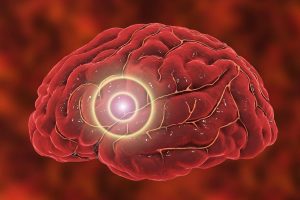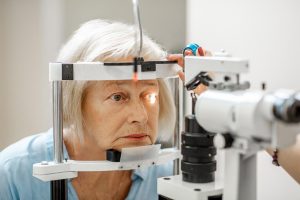Back before coronavirus took over the headlines, every week seemed to bring another report about artificial intelligence besting human doctors at everything from diagnosing skin cancer to spotting pneumonia on chest X-rays.
But these artificial intelligence (AI) tools — computer programs that get better at performing a task by being “trained” on the right kind of data — are years away from being used to help diagnose real-life patients, according to the doctors helping to develop and test them.
“We still have a lot of unknowns in terms of generalizing and validation of these systems before we can start using them as standard of care,” said Dr. Matthew Hanna, a pathologist at Memorial Sloan Kettering Cancer Center in New York City.
Generalizing means building an AI tool that can be used in multiple hospitals, and validation involves testing and adjusting an AI tool to ensure it’s accurate.
“These are the types of studies we need to do to make sure these models are performing properly and not potentially harming patients,” Hanna explained.
Meanwhile, humans are in no rush to swap their doctor for an AI diagnosis.
In a 2019 New York University-Harvard study, business school students said they’d be OK with getting poorer quality health care as long as it was provided by a human instead of AI. People resisted AI, the study authors found, because they felt it would not take their “idiosyncratic characteristics and circumstances” into account.
Research versus the real world
Whether people like it or not, AI will increasingly play a supporting role in medicine, helping doctors work more efficiently and consistently. The U.S. Food and Drug Administration has approved dozens of AI platforms for applications including monitoring patients remotely, identifying brain bleeding on a CT scan, recognizing abnormal heart rhythms based on Apple Watch recordings, and even diagnosing autism.
All of these available tools are supervised, meaning they don’t go off and learn things on their own. Think of them as trusted assistants working behind the scenes, offering suggestions but not making decisions.
AI tools are being developed to speed up cancer diagnosis and treatment, for example, by helping radiologists with jobs that they now must do by hand, such as “contouring,” or manually drawing the boundary line between a tumor and normal tissue on multiple images.
“What we really want to do is, in a structured way, teach an algorithm to find lung nodules, characterize them according to the standard classification schema, and then help radiologists put them into a useful report,” explained Dr. Bibb Allen Jr., chief medical officer of the American College of Radiology’s Data Science Institute.
“AI is all about information and bringing information as appropriate to the physicians that are taking care of the patient,” Allen added. “We have an explosion of data around our patients, but it’s hard to access.”
‘Greater efficiencies’
Radiologists made the switch from reading X-ray films on light boxes to interpreting images on computer screens decades ago. But digitalization is not as far along for pathologists, many of whom are still peering through microscopes at thin slices of biopsied tissue fixed on glass slides.
Even when reviewing slides on a computer, “it can be time-consuming for pathologists to manually review images of all lymph node specimens to identify potential metastatic disease,” Hanna noted. “If an AI model is trained to detect the presence or absence of metastatic breast cancer, this automated screening could help triage cases for pathologists — bringing specific cases to their attention.”
AI won’t replace pathologists, who report multiple other diagnostic findings for each specimen they review, Hanna added. “But AI could create greater efficiencies to potentially shave off hours, or even days, so that pathology reports may be finalized sooner for patients,” he said.
“We have a very large shortage predicted in pathologists in the U.S., and we also have a vastly increased workload, so I think these machine learning models will be a necessity in the future,” Hanna explained.
Allen pointed out that “it’s not going to happen overnight. Every year, we’re just going to put more and more AI tools into the way we care for patients. It’s going to do things that are just going to, over time, improve the way we take care of patients. It’s not going to be, ‘Oh, we flipped a switch and we’ve got AI,'” he added.
“Patients need to understand that their physician will be there helping them and they will be using AI to help their patients, but not as a tool to give to patients to replace their physicians,” Allen said.
Copyright © 2024 HealthDay. All rights reserved.















-300x169.jpg)









